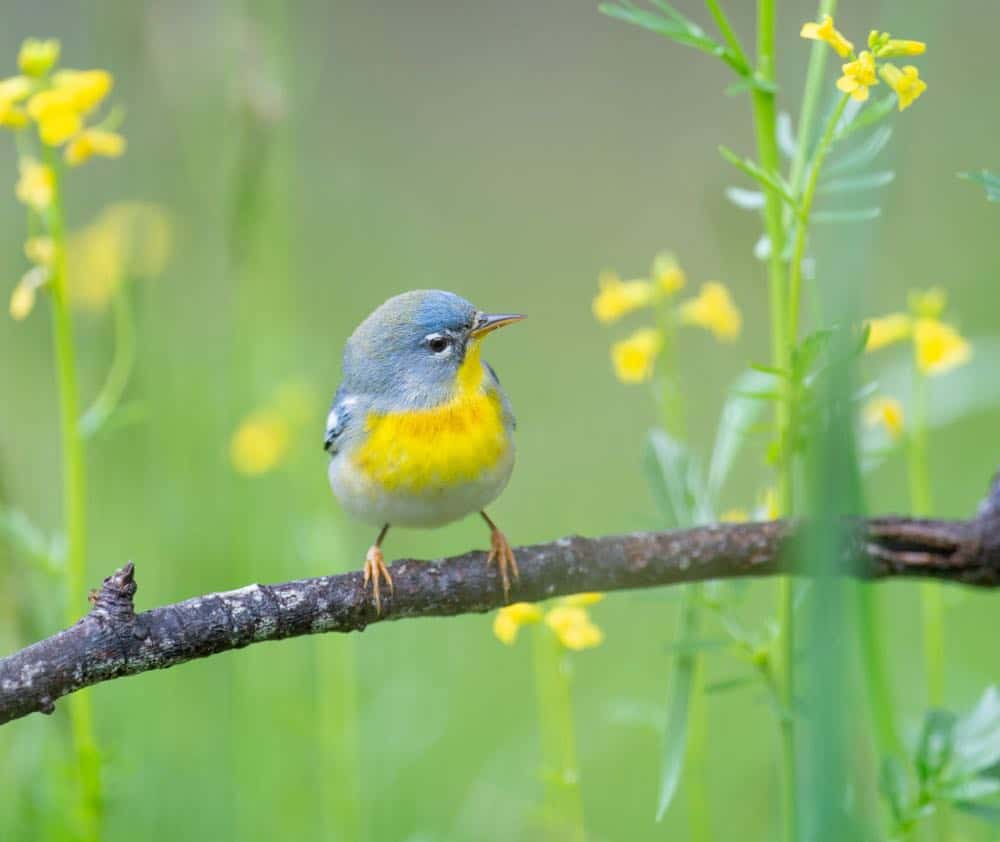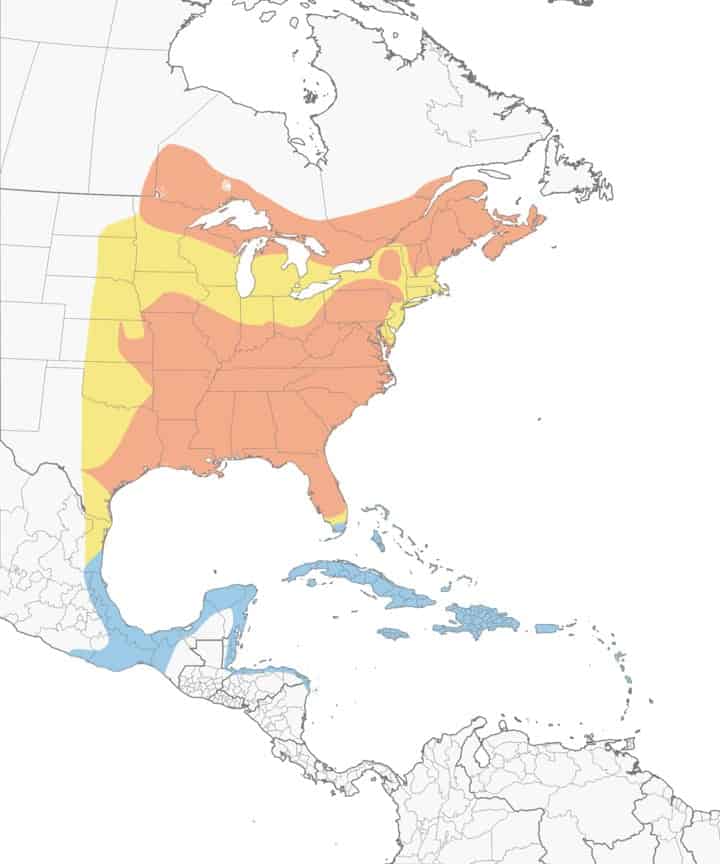
Appearance: Northern parula is a small bird about 4.5″ long, blue/gray with a yellow throat and back patch, bluish-gray overall with a yellow-green patch on the back, a brown band on the lower, and white strips above and below each eye. Females are similar but more muted colors. neck, and 2 white wing bars.
Diet: Spiders, insects, berries, seeds, nectar.
Feeder food: Unlikely to visit a feeder.
Habitat: Prefer forested areas especially when water is present (streams, marshes) and in the lowland where moss is present.
Nesting: Nests are built in mossy vegetation as high up as 100′ at the end of a branch. 1-2 broods/season, 2-7 eggs/brood, eggs are about .65″ long, white with red/brown/purple speckles, and incubation lasts about 12-14 days.
Migration: Northern parulas are migrators. In the spring, they migrate north to breed and raise their young. Then in the fall, they migrate south for the winter.
Breeding range: The US states south and east of Kansas, northern Minnesota, Wisconsin, & Michigan, Pennsylvania, New York, New England, and the southern parts of Canadian provinces Manitoba, Ontario, and Quebec.
Winter range: Southern tip of Florida, the Caribbean islands, Mexico, and Central America.
Range Map


